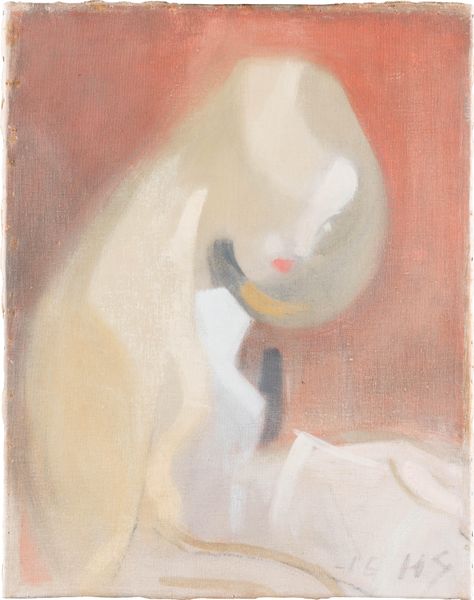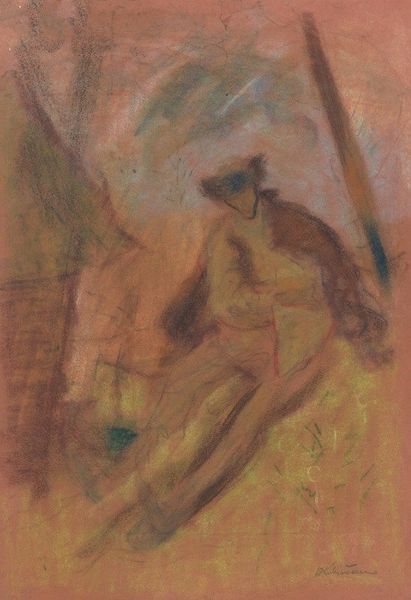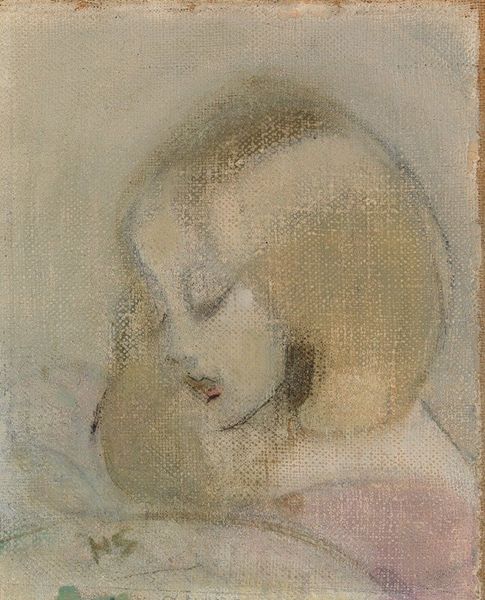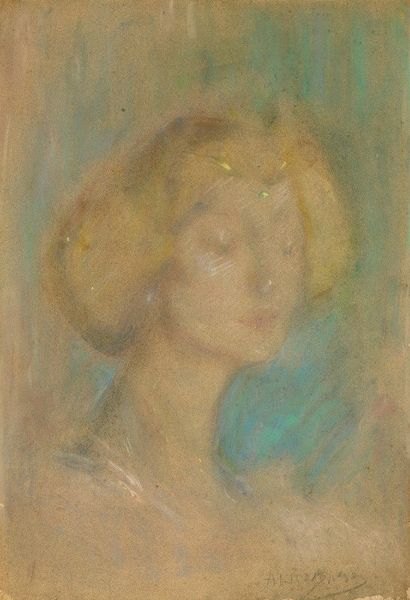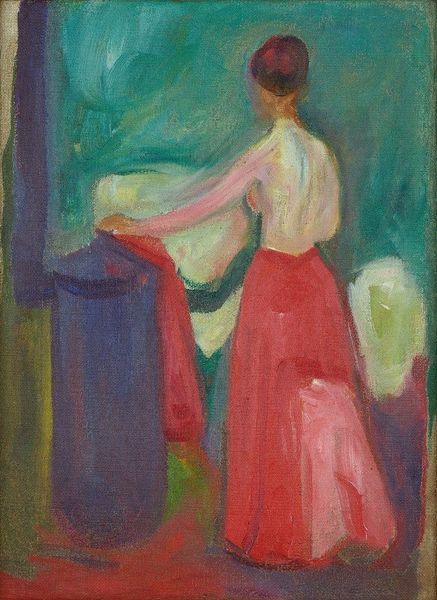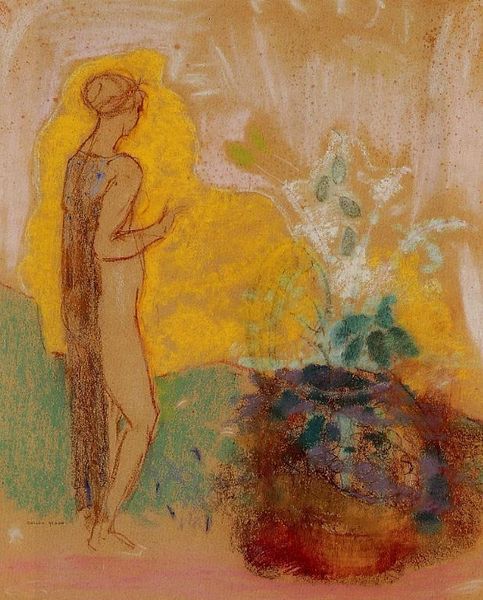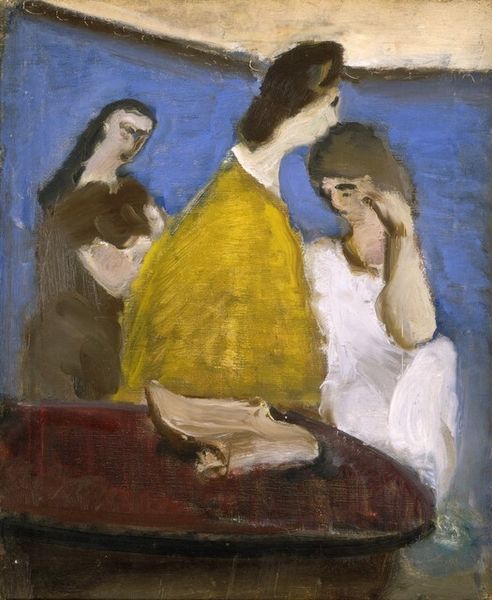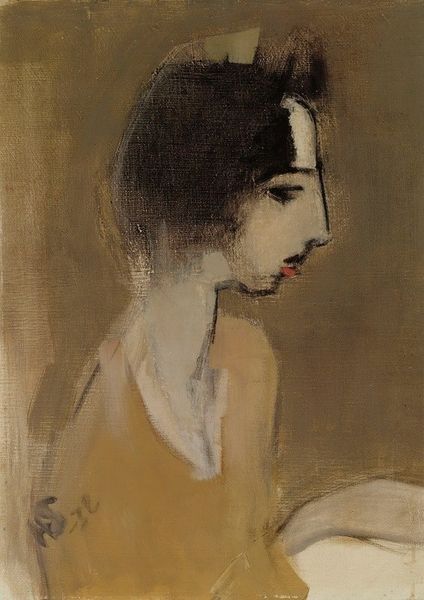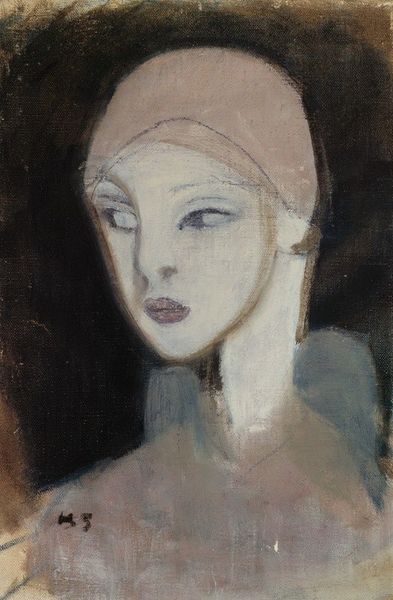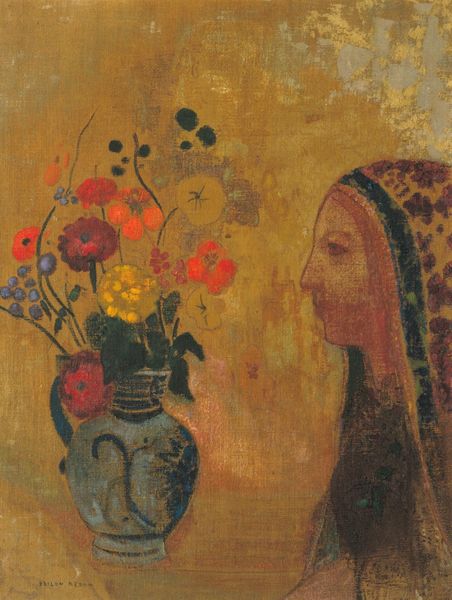
Copyright: Public Domain: Artvee
Editor: Here we have Helene Schjerfbeck's oil painting, "The Family Heirloom," created sometime between 1915 and 1916. I’m struck by how softly the figures seem to blend into the background. The facial features are mere suggestions of detail and yet it's undeniably intimate. What aspects of its formal structure stand out to you? Curator: The arrangement of color, and especially its restraint, is the key structural element. Note the dominance of earthy hues--ochre, green--offset by strategically placed spots of vermillion on the lips and implied decoration. Schjerfbeck uses color less to describe and more to activate the surface and draw our eye. What do you make of the negative space between the two figures, and how the painting avoids distinct outlining? Editor: I see that now – the limited palette really pulls the whole thing together! The two women become almost like figures emerging from the canvas itself. But is that just a trick of my own perception? Curator: Not a trick at all. The forms themselves are soft, ambiguous. Edges dissolve. The pointillist brushstrokes contribute to this atmospheric quality, disrupting clear linear delineation. One might observe an avoidance of definite shapes and boundaries overall. Editor: So, would you say that this focus on form over realism helps communicate something beyond just a visual representation of two women? Curator: Precisely. Through careful attention to the interplay of color and dissolution of form, Schjerfbeck privileges mood and feeling over representational accuracy. Editor: That’s fascinating. I hadn’t considered how much could be communicated just through color and form alone! It gives me a whole new perspective on interpreting the artwork. Curator: Indeed, the interplay between presence and absence invites ongoing contemplation.
Comments
No comments
Be the first to comment and join the conversation on the ultimate creative platform.
